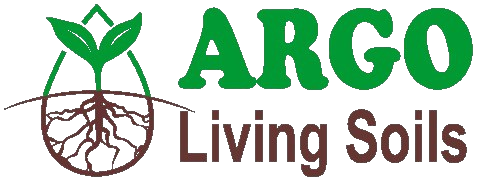What Is Cation Exchange Capacity?
Cation exchange capacity, or CEC, is the total capacity of a soil to hold cations, or its total negative charge. The higher the CEC, the higher the negative charge and the more cations can be held. It affects the soil’s structure, available nutrients, soil pH and how the soil reacts to fertilizers and other amendments, which are critical factors for anyone planting a crop.

Ok…What Is A Cation, Then?
Cations are ions that are formed when a metal loses one or more electrons but does not lose any protons, therefore becoming more positive than negative.
These positively charged ions, or cations, can be exchanged if there is enough corresponding negative charge in the surrounding area, so the higher the negative charge, the more of these positive cations can be traded.
Cation Exchange Capacity In Soil
Since soil is a combination of sand, organic matter, clay and silt, CEC is a feature unique to every different type of soil.
It is tough to change a soil’s CEC, especially for sandy soils which typically have a low capacity compared to soils with a lot of clay or silt.
CEC determines the soil’s ability to hold onto critical nutrients and water, as well as its ability to prevent the soil itself from becoming acidic. Some more common cations in soil are calcium, magnesium, sodium, and potassium.
Organic matter has a high CEC, so sandy soils need organic matter in order to keep nutrients in the topsoil and reduce leaching.
Cation Exchange Capacity Benefits
Soils with a high CEC are less likely to lose important nutrients like potassium, magnesium and other cations.
Not enough calcium or potassium or other cations in the soil may be the most important factor, otherwise known as the limiting factor, that determines whether plants will be vibrant, stunted, or even grow properly at all.
What Is a Good Cation Exchange Capacity Number?
A CEC in the range of 250 to 400 meq/100 g is considered optimal, and because high CEC soils usually indicate the presence of more clay and organic matter, they generally have a greater capacity to hold water, also of paramount importance to growers.
How To Achieve High Cation Exchange Capacity
Besides adding lime and raising the pH level, the most effective way to improve the CEC of your soil is to add organic matter, period.
Argo CFO Vermicasts (CSE: ARGO | OTCQB: ARLSF) have a field-tested formula that uses prolonged and advanced pre-decomposition of vermicast feedstock that contributes to high CEC levels, every time.
Along with the use of biochar and the unique molecular structure of our vermicasting, the high cation exchange capacity, in turn, increases the yield of fruits, flowers, and other plants.
ARGO CFO Vermicasts are valued by growers because they add and facilitate:
- Plant Growth and Vigor
- Increased Nutrient Cycling
- Increased Water Retention
- Enhanced Soil Biology
Argo’s fungal dominant vermicasting, when applied early in the season, adds high levels of available potassium and phosphorus into the growing medium, ready for uptake.
It will increase the biological nitrogen uptake in the soil as well, allowing more nitrogen to get directly to the plant.
Did you find this post helpful?
Would you like to learn more about agribusiness and the world of Argo Living Soils? Download our Investor PDF below.
DOWNLOAD INVESTOR PDF
